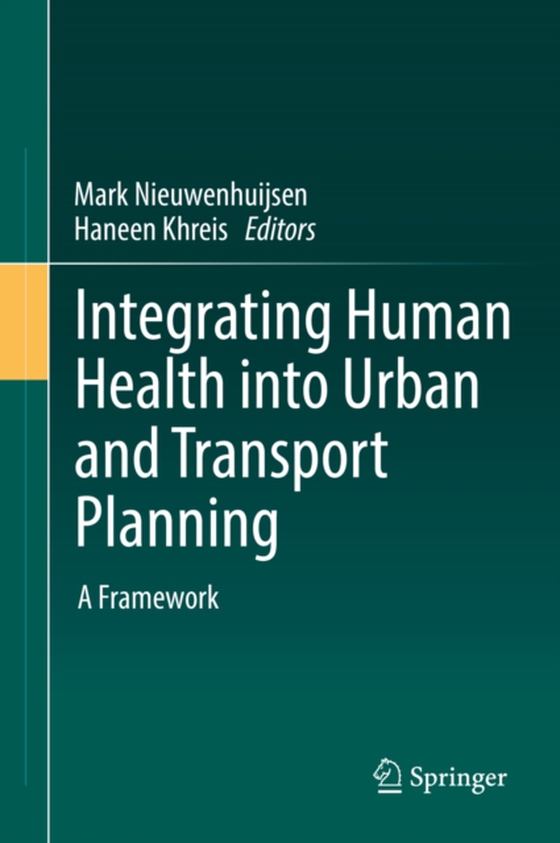
Integrating Human Health into Urban and Transport Planning e-bog
2190,77 DKK
(inkl. moms 2738,46 DKK)
This volume brings together the world's leading experts on urban and transport planning, environmental exposures, physical activity, health and health impact assessment to discuss challenges and solutions in cities. The book provides a conceptual framework and work program for actions and outlines future research needs. It presents the current evidence-base, the benefits of and numerous case st...
E-bog
2190,77 DKK
Forlag
Springer
Udgivet
13 juli 2018
Genrer
Urban communities
Sprog
English
Format
pdf
Beskyttelse
LCP
ISBN
9783319749839
This volume brings together the world's leading experts on urban and transport planning, environmental exposures, physical activity, health and health impact assessment to discuss challenges and solutions in cities. The book provides a conceptual framework and work program for actions and outlines future research needs. It presents the current evidence-base, the benefits of and numerous case studies on integrating health and the environment into urban development and transport planning. Within cities there is a considerable variation in the levels of environmental exposures such as ambient air pollution, noise, and temperature, green space availability and physical activity. Many of these exposures, and their adverse health impacts, are related to and are being exacerbated by urban and transport planning and policy. Emerging research suggests that urban and transport planning indicators such as road network, distance to major roads, traffic density, household density, industry, and natural and green space can explain a large proportion of the variability in environmental exposures and therefore represent important and highly modifiable factors. The urban environment is a complex interlinked system. Decision-makers need not only better data on the complexity of factors in environmental and developmental processes affecting human health, but also an enhanced understanding of the linkages between these factors and health effects to determine at which level to target their actions most effectively. In recent years, there also has been a shift from trying to change at the national level to more comprehensive and ambitious actions being developed and implemented at the regional and local levels. Cities have come to the forefront of providing solutions for environmental issues such as climate change, which has co-benefits for health, but yet need better knowledge for wider health-centric action. This book provides the latest and most up-to-date information and studies for academics and practitioners alike.
 Dansk
Dansk

